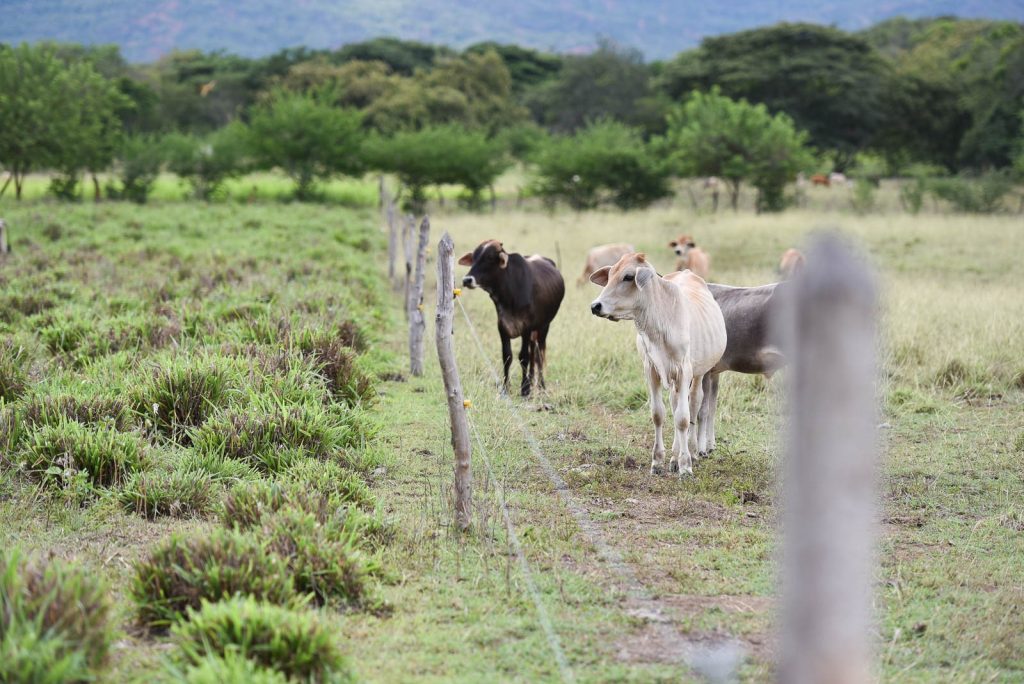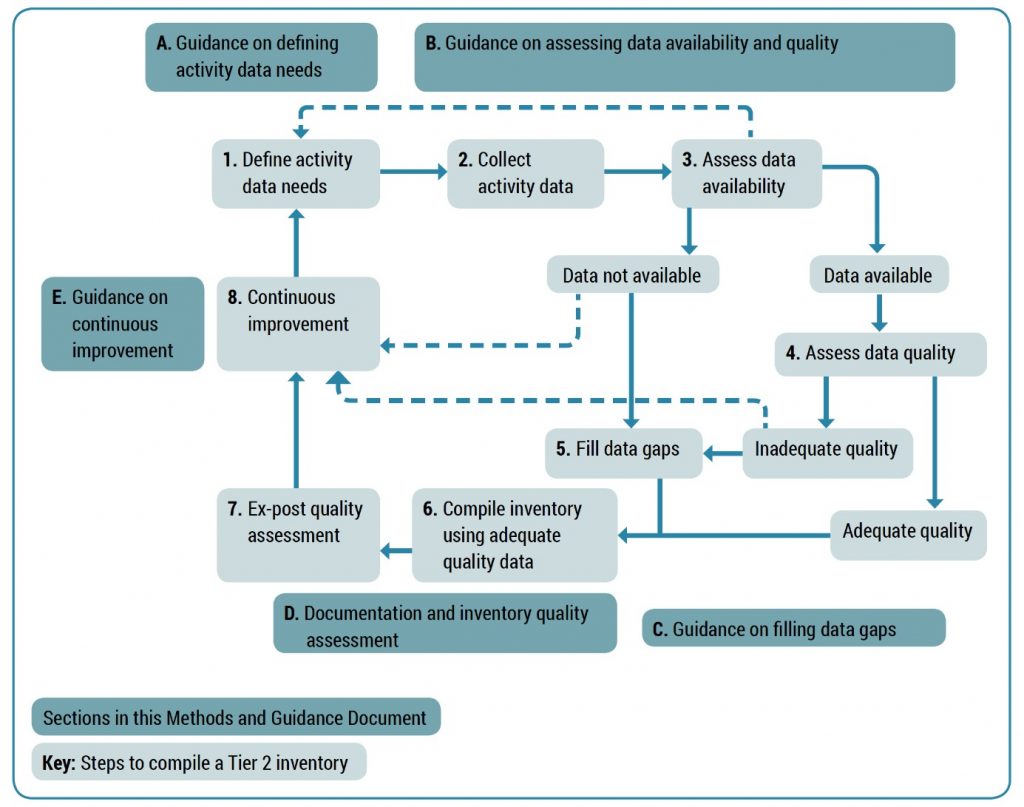Researchers show how improved greenhouse gas inventories for the livestock sector meet international requirements, support climate change and productivity goals and help broaden countries’ policy options.
For media interviews and enquiries please contact:
Andy Reisinger / +64 21 613 125 / [email protected]
Julianna White / +1.802.777.7017 / [email protected]
WELLINGTON, NEW ZEALAND // BURLINGTON, USA (23 August 2016) – Scientists say that using advanced greenhouse gas inventory and accounting methods to monitor, verify and report on emissions will be necessary for livestock to demonstrate that it is contributing effectively to the ambitious goals of the Paris Agreement on climate change.
Scientists from the Livestock Research Group of the Global Research Alliance on Agricultural Greenhouse Gases (GRA) and the CGIAR Research Program on Climate Change, Agriculture and Food Security (CCAFS) argue in a newly released brochure that more accurate and robust information on greenhouse emissions and productivity from livestock, captured through an advanced inventory system, will be essential if the sector is to contribute effectively to climate and development outcomes.
“61 nations included mitigation in the livestock sector in their Intended Nationally Determined Contributions submitted to the United Nations Framework Convention on Climate Change in 2015,” Lini Wollenberg, leader of the CCAFS Low Emissions Development research program based at the University of Vermont’s Gund Institute for Ecological Economics, said. “They need advanced greenhouse gas inventories to report on changes in emissions and the reductions in emissions intensity that result from more productive and efficient livestock systems.”
Simple inventory methods (called Tier 1) use livestock numbers multiplied by a constant emission factor per animal, meaning that the only way to reduce emissions from livestock is to reduce animal numbers – not plausible for countries concerned with food security and rural development. Researchers point out that livestock development and climate change outcomes can support each other: more productive and efficient farm systems generally produce food at much lower greenhouse gas emissions per unit of product.
The brochure draws on a global analysis demonstrating that doubling the milk production of low-yielding dairy systems, from 1,500 to 3,000 litres per cow per year, could roughly halve the greenhouse gas emissions per litre of milk from those systems. However, if a country’s livestock greenhouse gas inventory does not use advanced methods (called Tier 2), then the impact of such productivity gains is missed.
Advanced inventories allow countries to understand the impact of different productivity measures on emissions. For example, reductions in emissions intensity may be achieved through (see e.g. here and here):
- Improved digestibility of feeds
- Increased pregnancy rates for mature breeding cows
- Increased weight gains in finishing animals.
Such productivity measures may support rural economic development, form the basis of a climate change mitigation plan to be submitted to the UNFCCC, or help qualify a country for climate finance.
Uruguay, for example, used its advanced greenhouse gas inventory in the livestock sector to commit to reducing emissions intensity in livestock (i.e. emissions per kg of meat) by 31-46% by 2030 from base year 1990. The inventory also allows Uruguay to incorporate outcomes from productivity improvements into its domestic policies and use them to demonstrate progress towards its INDC.
“Many countries know that a Tier 2 inventory would be incredibly helpful for them, but they are deterred by the perceived complexity and the resources required. An inventory based on Tier 2 methods is by its nature more detailed than the simple Tier 1 methods that most countries start out with, but it does not have to be much more complicated,” explained Harry Clark, Co-chair of the GRA’s Livestock Research Group and Director of the New Zealand Agricultural Greenhouse Gas Research Centre.
“Countries need guidance and support on how to set up an inventory that is credible and defensible but does not place unrealistic demands on their data sources,” Clark said.

“Livestock development and climate change: The benefits of advanced greenhouse gas inventories” was first published by the Global Research Alliance on Agricultural Greenhouse Gases and the CGIAR Research Program on Climate Change, Agriculture and Food Security on 23 August 2016. It is available online at: http://hdl.handle.net/10568/76520
Further reading:
Livestock Research Group of the Global Research Alliance on Agricultural Greenhouse Gases (GRA): www.globalresearchalliance.org/research/livestock
Emissions data, greenhouse gas emissions measurement methods, and tools, for agriculture: www.samples.ccafs.cgiar.org
Low emissions development in agriculture: quantification, decision-making and implementation: https://ccafs.cgiar.org/themes/low-emissions-agriculture
The Global Research Alliance on Agricultural Greenhouse Gases brings countries together to find ways to grow more food without growing greenhouse gas emissions. Its Livestock Research Group (LRG) is focused on reducing the emissions intensity of livestock production systems and increasing the quantity of carbon stored in soils supporting those systems. The LRG works with scientists, farmers and farm advisors, industry and policy makers to research mitigation options, share knowledge and experiences and help strengthen the resilience of livestock farming.
The CGIAR Research Program on Climate Change, Agriculture and Food Security (CCAFS) brings together the world’s best researchers in agricultural science, development research, climate science and Earth System science, to identify and address the most important interactions, synergies and trade-offs between climate change, agriculture and food security. The University of Vermont hosts research focusing on low emissions agriculture. Research is carried out with support from CGIAR Fund Donors and through bilateral funding agreements. For details please visit https://ccafs.cgiar.org/donors.
The New Zealand Agricultural Greenhouse Gas Research Centre (NZAGRC) coordinates research and development into agricultural greenhouse gas mitigation solutions in New Zealand. The NZAGRC’s focus is to provide knowledge, technologies and practices that grow agriculture’s ability to create wealth for New Zealand in a carbon-constrained world. The NZAGRC works in partnership with nine New Zealand organisations to deliver practical on-farm solutions to mitigate methane, nitrous oxide and increase understanding and stability of soil carbon stocks.
New publication can help countries improve the accuracy of livestock emission estimates.
92 developing countries included livestock-related emissions as a target for mitigation in their Nationally Determined Contributions (NDCs). One of the biggest challenges to achieving mitigation in the sector is tracking emissions, for which national inventories are a key tool. However, systems for measuring and monitoring changes in livestock greenhouse gas emissions are under-developed in many countries. Challenges in compiling data about the activities related to livestock management is a primary barrier. Currently, most developing countries use the IPCC Tier 1 approach which can only reflect change in livestock numbers. Tracking reductions achieved through improvements in management and productivity requires a Tier 2 approach, which uses activity data to estimate emission factors. The problem is that Tier 2 approaches require more activity data, and a lack of good quality activity data is often perceived as a barrier to adopting a Tier 2 approach.

A new guidebook, jointly developed by the GRA, the CGIAR Research Program on Climate Change, Agriculture and Food Security (CCAFS), the Food and Agriculture Organization of the United Nations (FAO) and UNIQUE forestry and land use GmbH, provides practical methods for countries to compile the activity data used to implement the IPCC Tier 2 methodology. The purpose is to support countries to improve the accuracy of the livestock emission estimates in national GHG inventories, and thus enable countries to better set their NDC mitigation targets, and measure and report progress.
The guidebook provides an 8-step framework for countries to compile activity data (see Figure 1 below) and it helps answer questions such as how to define what data is needed; how to collect the data needed, and how to assess data availability and quality; how to fill data gaps; how to document the inventory and assess inventory quality; and how to plan for continuous improvement.

Each section contains:
- Practical guidance on the compilation of activity data
- Overview of related IPCC good practices guidance
- Useful tools for implementing the practical guidance
- Methodological guidance that explains issues affecting decisions about how to compile activity data
- Examples of how to implement the practical guidance
- Links to additional resources
The guidebook provides practical methods for assessing data availability and data quality, and for systematising available data and filling data gaps using methods consistent with the IPCC guidelines. Through worked examples of gap filling methods, the guidebook shows that an initial Tier 2 inventory can be compiled and used to identify priorities for data collection as part of a continuous improvement process.
The guidance was compiled around the same time as Kenya developed its first Tier 2 inventory for dairy cattle with support from the GRA, and several examples in this guidance are drawn from that experience. The guidebook is already being road-tested in other countries, and the experiences gained will contribute further methods and examples.
This guidebook fills a long-standing gap in learning resources dedicated to improving livestock greenhouse gas inventories. It shows that the lack of activity data is often more a perceived rather than a real barrier to adopting a Tier 2 approach. When first adopting a Tier 2 approach for livestock greenhouse gas emissions, there are few countries – including developed countries – where all the necessary livestock activity data are readily available and of good quality. Using the tools and methods explained in this guidebook, countries will be able to compile an initial Tier 2 inventory that is consistent with the IPCC guidelines, and prioritize the use of resources for continual improvement over time. This will help countries to comply with the agreements on transparency under the Paris Agreement, and will provide a better basis for identifying mitigation options and tracking change in emissions from the livestock sector.
To download the guidebook, see here.
Read more:
- Report: Measurement, reporting and verification of livestock GHG emissions by developing countries in the UNFCCC: current practices and opportunities for improvement.
- Summary: Livestock development and climate change: the benefits of advanced greenhouse gas inventories
- Resource portal: Tier 2 inventory approaches in the livestock sector: a collection of agricultural greenhouse gas inventory practices
- Website: MRV Platform for Agriculture
The Livestock Activity Data Guidance (L-ADG) was developed through a collaboration of the GRA, the FAO, UNIQUE forestry and land use GmbH and CCAFS.
Feed management in ruminant production systems strongly affects agricultural greenhouse gas (GHG) emissions. Scientists from the LRG’s Feed and Nutrition Network (FNN) are working together on a major project, ‘Capturing Effects of […]
The Livestock Research Group aims to make its research findings widely available. These are usually in the form of good practice guidelines and technical manuals on key areas of livestock emissions research […]
